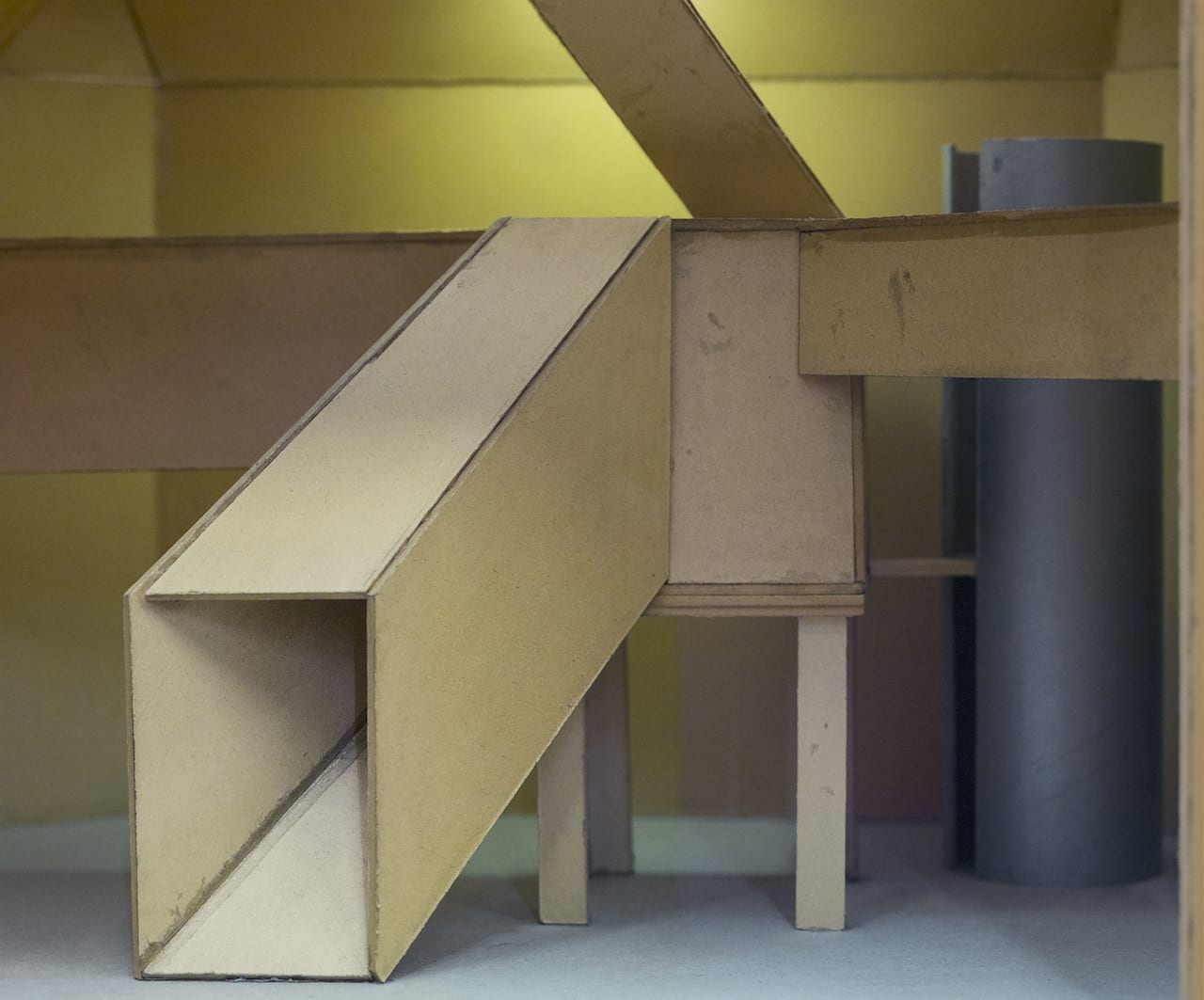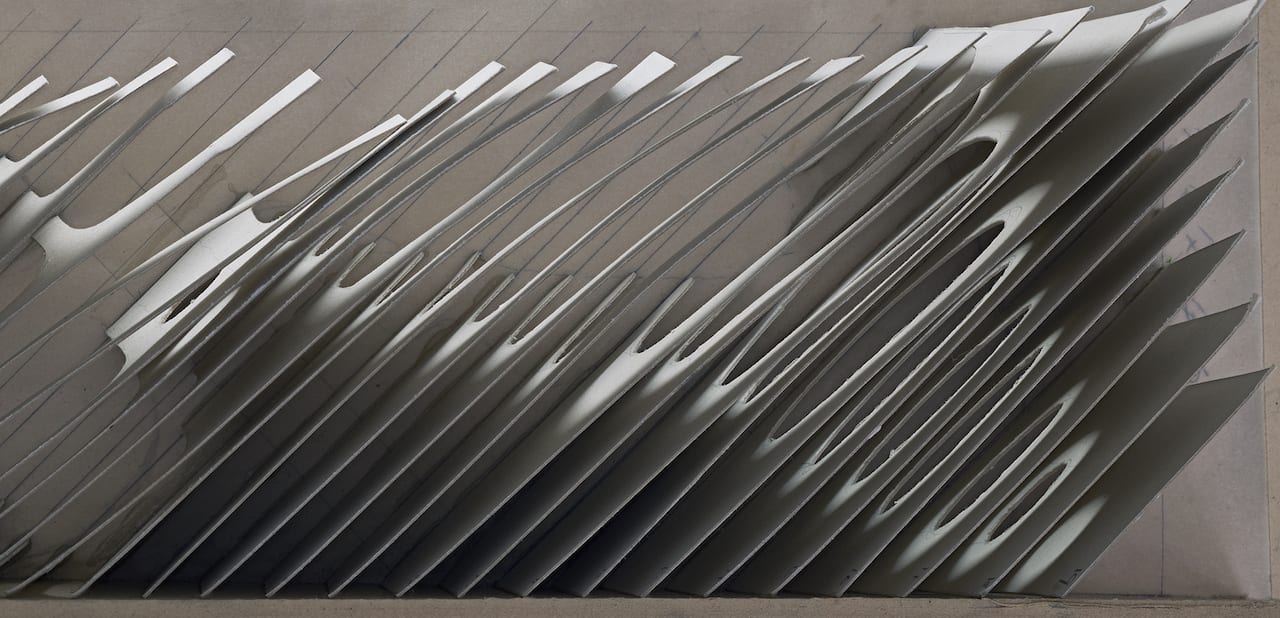Thomas Demand is known for building and photographing pristine 3D models that look like real rooms. Often loaded with political significance, his recreations include the kitchen in which Saddam Hussein cooked his last meal, the location of a failed assassination attempt on Hitler, and the interior of the Daiichi nuclear power plant in Fukushima after the 2011 earthquake forced workers to evacuate.
Recently his work has taken a new turn, and he has become interested in other people’s models. In Model Studies, Demand has photographed discarded structures made by famous architects such as John Lautner.
Demand considers the architectural model a sculptural manifestation of ideas, addressing the fleeting nature of concepts that are bound up in the repetitive creative process of conceiving and discarding new frameworks. Model Studies, he believes, explores the numerous possibilities embedded in the concept of the model.
For the third part of his series, Demand considers the ideas of Austrian architect Hans Hollein. BJP caught up with him to find out more.
BJP: Who, or what, are your main inspirations?
Thomas Demand: The world in front of me…
BJP: When did sculpture and photography first merge in your practice?
TD: Photography was just a record in the beginning, but then complicated the effort, as the image of something isn’t necessarily a recognisable rendering of the object it shows. This is a common place, but as a student it’s nevertheless a nut to crack.
BJP: How did Model Studies start and what made you want to carry it on?
TD: I was invited to come as a research scholar to the Getty Institute, and by browsing through their holdings I came across a small number of discarded models by the architect John Lautner, all of unbuilt projects. I saw a certain potential, dormant in these fragile leftovers, and tried to find out more about that in a book and subsequently a series of photographs.
BJP: What was it like going through the collection at Getty? In what ways were you surprised or inspired by what you found?
TD: These models are too fragile to be shown and they were never made to be used outside of their office. So it’s a testimony to finding and refining an idea for a building project rather than a representational selling tool, which architectural models usually tend to be. That and their decay, the traces of their changing appearance, and careless handling also resulted in an appearance I don’t feature in my own work, which I welcomed. They are nearly all made from cardboard but do not do what my previous work did.

BJP: You first came across John Lautner’s models, did you actively seek out Hans Hollein’s work? If so, why?
TD: I met Hans Hollein a few times and his freedom in thinking much impressed me at the time. Years later I had heard that his office and estate had to be split apart and transferred to an institution, so I thought I would like to see his stuff before it got decontextualised. I went to see the five places where the archive was stored and took a camera.
BJP: Why is it important to show the ripped edges, pencil marks, and human work that has gone into the models?
TD: There is not much point in finding my own work in others’. It’s a different temporality than my previous work. It’s not about a utopy, memory or an idealistic view of the world but much like the leftover of an idea or a formal process.
BJP: Have you always had an interest in architecture? If so, why?
TD: Small question, big answer: man is transforming his environment, we create artificial circumstances for a number of reasons, like shelter, all that is architecture. And as Mr. Hollein said somewhere, architecture is a medium of communication.
www.thomasdemand.info Model Studies III will be on show for the first time as part of ARCHIVMATERIAL / NEW STOP MOTION at Sprüth Magers Berlin from 24 Nov 2018 – 19 January 2019 https://spruethmagers.com/


